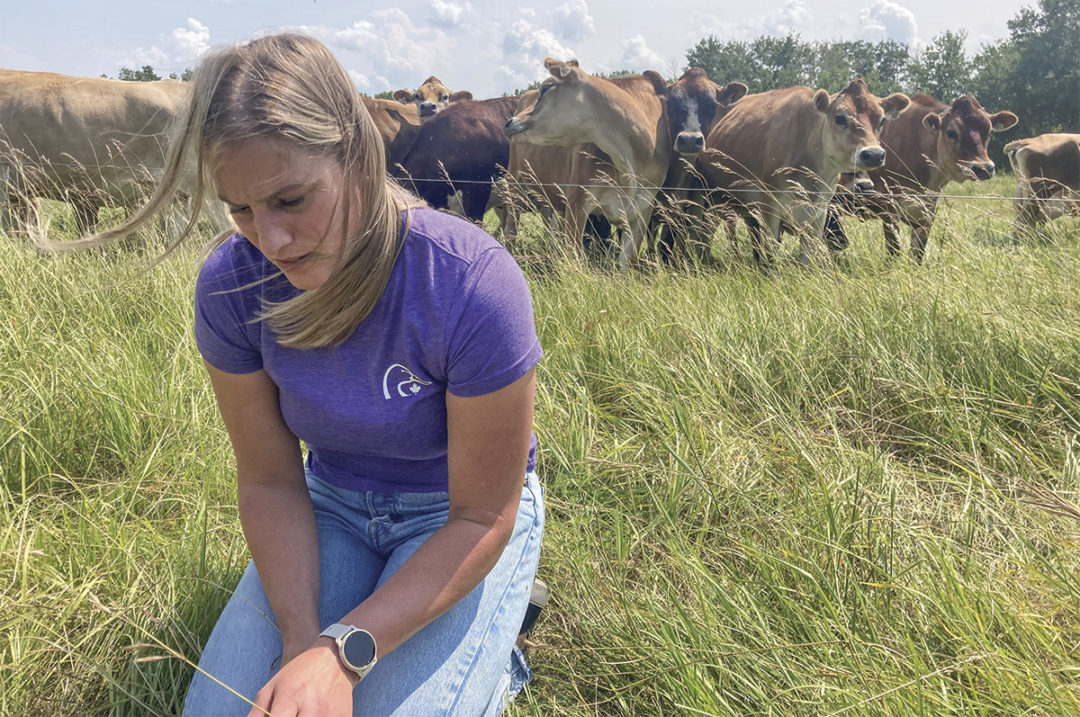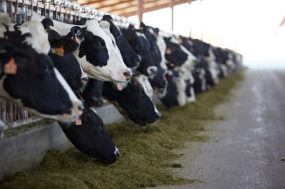To read this article in French, click here.
Globally, Canadian dairy farmers are at the forefront of sustainable milk production as they continually work to lessen their environmental impact and improve the health of the industry for generations to come. Changing environments, increased pressure from consumers who demand more and more sustainability and transparency, and growing knowledge of regenerative practices mean that maintaining our position as sustainable leaders is an ongoing mission.
Acknowledging these challenges, along with the opportunities that exist in this space, organizations, such as Ducks Unlimited Canada (DUC), have joined forces with Dairy Farmers of Canada (DFC) to support the sustainability goals of dairy farmers nationwide.
This collaboration is part of DFC's plan to achieve net-zero greenhouse gas emissions from dairy farms by 2050, and it aligns with the organization's vision for cooperative efforts with like-minded partners. “We take a lot of pride in the partnership ... to enhance on-farm biodiversity but also to provide those environmental benefits to the local community and beyond. This partnership will positively impact the sustainability of our working landscapes while also protecting Canada's essential wetland and grassland habitats,” says DFC President David Wiens.
The value of biodiversity
Connie McLellan, a conservation program specialist with DUC, highlights the importance of biodiversity. She explains, “Biodiversity works as a whole system; having good biodiversity on your farm will help improve many different aspects of your farm ... you'll have healthier soil, and you'll have more plants which attract more pollinators – more pollinators and healthier soil equals healthier crops. [This translates to] an increase in crop production without adding any extra inputs.”
Although many biodiversity initiatives are land-based, McLellan emphasizes their cost-effectiveness for dairy farms. Enhancing and restoring biodiversity is a cost-effective way to increase production, leaving farmers with savings that can be invested into other areas of the farm. Improving soil health through biodiversity restoration leads to improved water retention and better-quality crops, which in turn make higher-quality feed for cows, potentially boosting milk production. McLellan describes this as the “trickle-down effect” of prioritizing biodiversity.
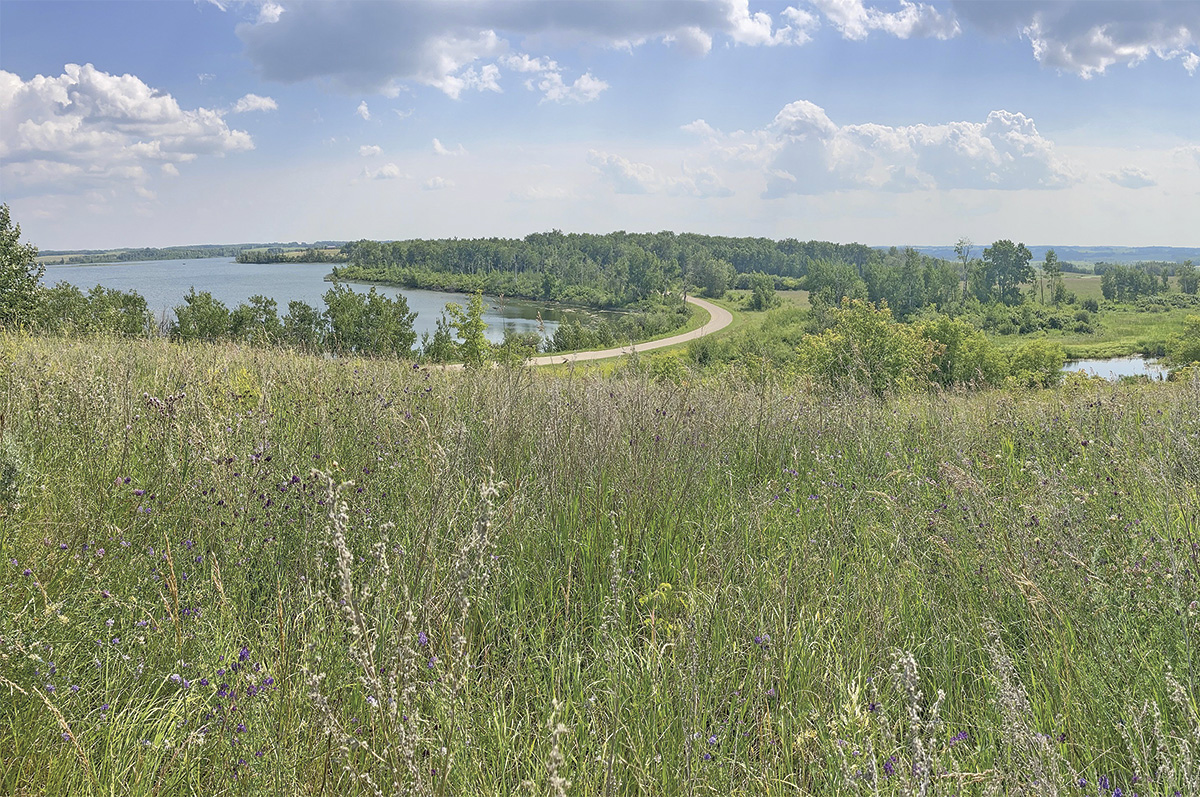
The owners of this rangeland field in Manitoba have signed a 10-year contract declaring their intent not to till the land during this time; rather, it is designated for sole use as pasture. Photo provided by Connie McLellan.
In alignment with McLellan's sentiments, Wiens underlines the benefits of biodiversity preservation, recognizing the opportunities they provide to dairy farmers as these initiatives are designed to conserve biodiversity while simultaneously optimizing profitability. “We've often said environmental sustainability is not a pillar on its own. Boosting environmental sustainability brings economic sustainability, as well as social sustainability,” Wiens says.
How to support biodiversity
For farms interested in supporting local biodiversity and waterways, tailored region-specific programs are available. Examples include a forage program that encourages year-round perennial crop cover to protect against soil erosion and nutrient loss, marginal-area programs that compensate farmers for seeding perennial forages on areas of unproductive land, and wetland restoration that can provide a water source for grazing cattle, flood control and increase pollinator populations. Most of these initiatives provide compensation to farms through payments made per acre, seeding-cost compensations and other financial incentives.
Justin Gaudet, owner of Ferme Beauchamp in Memramcook, New Brunswick, began taking advantage of these initiatives last year when he made the decision to convert wet areas of his land into two ponds, creating an inviting environment for wildlife to flourish. Gaudet says the land was transformed to accommodate multiple purposes. In addition to the ponds serving as a wildlife habitat, they also provide his dairy cows with a water source while out on pasture.
Gaudet practices rotational grazing to keep input costs lower, use his land efficiently and support the health of his animals. He says with the pond projects – which did not involve monetary costs – he has doubled the area of his land that can be used in rotational grazing and will be able to expand his operation by diversifying into beef production. These pond projects also support Gaudet’s wider goal of committing 10% of his farmland to wildlife areas.
“It's been important to work with nature a bit more. It's helped my farm become a lot more resilient. When we have extreme weather and extreme years, our farm is less affected than some of our neighbors because we have a more resilient ecosystem,” Gaudet says.
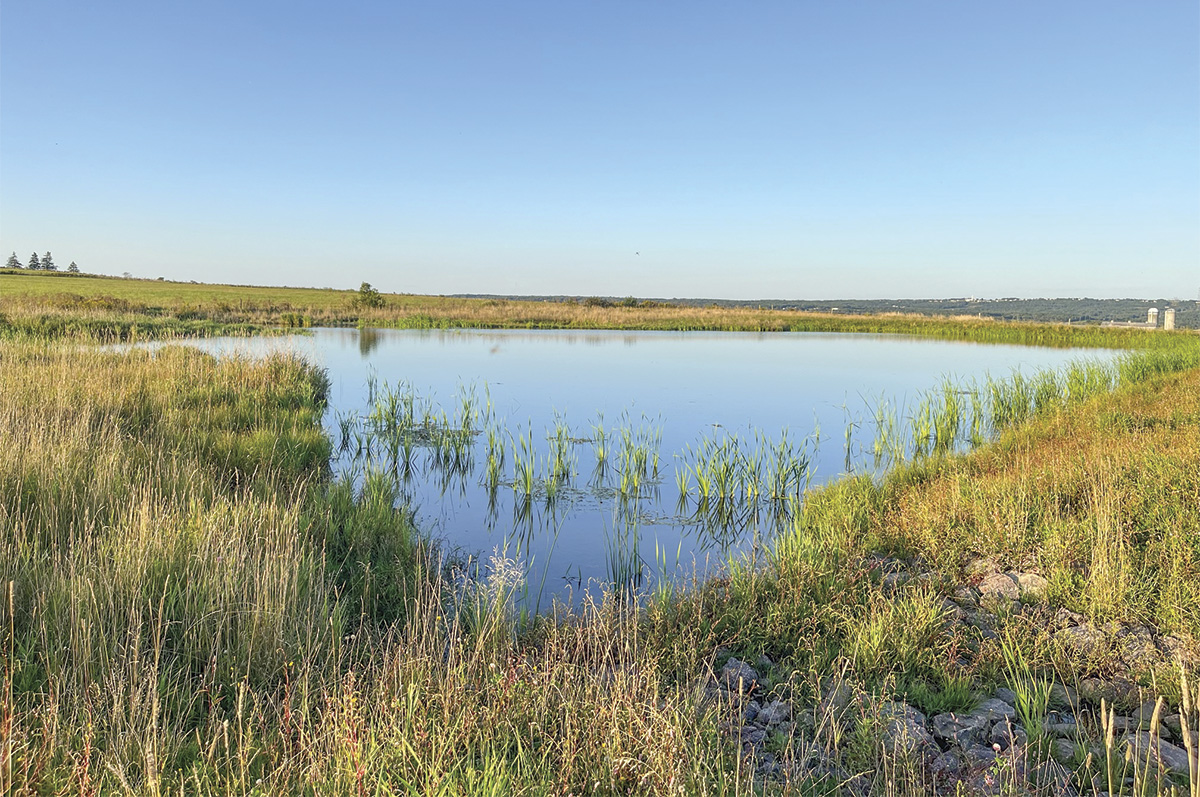
As part of his commitment to sustainability, New Brunswick dairy farmer Justin Gaudet has pledged 10% of his farmland for wildlife use. This transformed wet spot is one of these areas; the former cropping area is now a pond that doubles as a water source for his grazing dairy cows. Photo by Justin Gaudet.
Long-term advantages
Implementing regenerative and biodiversity-supporting practices allows farms to regenerate the productivity and health of their farmland. The benefits of these programs are long-term and help bolster the economic well-being of participating farms.
“By encouraging farmers to implement regenerative practices on their farm, they can use the same amount of land to increase their production, so they don’t need to clear more land, which stops deforestation. It will basically make the farm healthier and more productive without adding any inputs to the farm, so it’s really cost-effective for farmers. It also ensures the health of their soil and of their farm for many generations to come,” McLellan says.
In pursuit of farm self-sufficiency, Gaudet recognizes the importance of land-use efficiency, biodiversity and habitat planning. Working with and supporting biodiversity and local ecosystems offers a variety of benefits that contribute to farm longevity. These practices can also be used to foster stronger ties with local communities. Gaudet’s farm exemplifies this, as it is nestled within an urbanized area, which has motivated him to integrate his farm within his community in an effort to improve the community’s well-being.
His hopes for this integration include collaboration with his municipality to develop walking trails that traverse his farmland and boardwalks around his ponds to maximize the value of his land and all it offers. His vision is clear: transform his land into a community asset that positively contributes to the quality of life of those nearby, without hampering the economics of his farm.
Expanding on this vision, Gaudet says, “My farm becomes a part of the community that people can be proud of and that everybody can enjoy around me, while still keeping it as an economically viable business.”
Where to begin
To actively protect and restore biodiversity on their land, farmers can consider implementing some simple practices to see improvements, such as planting trees, reducing tillage, favouring forages over annual crops and installing nest boxes for birds. These small changes can and do make a significant difference in promoting biodiversity, McLellan says.
Recent years have seen a boon in the accessibility of regenerative agriculture resources. Gaudet, who faced challenges introducing his dairy herd to rotational grazing, says connecting with like-minded farms worldwide has become increasingly feasible. This is a resource more farms can tap into and apply to their operations. For those embarking on the journey toward greater self-sufficiency and regenerative practices, Gaudet advises beginning with a solid understanding of their operation’s unique environment. This knowledge should come from keen observation and reflection on nature in and around their farm to inform the selection of practices that align with these considerations and ensure harmonious coexistence with the land.
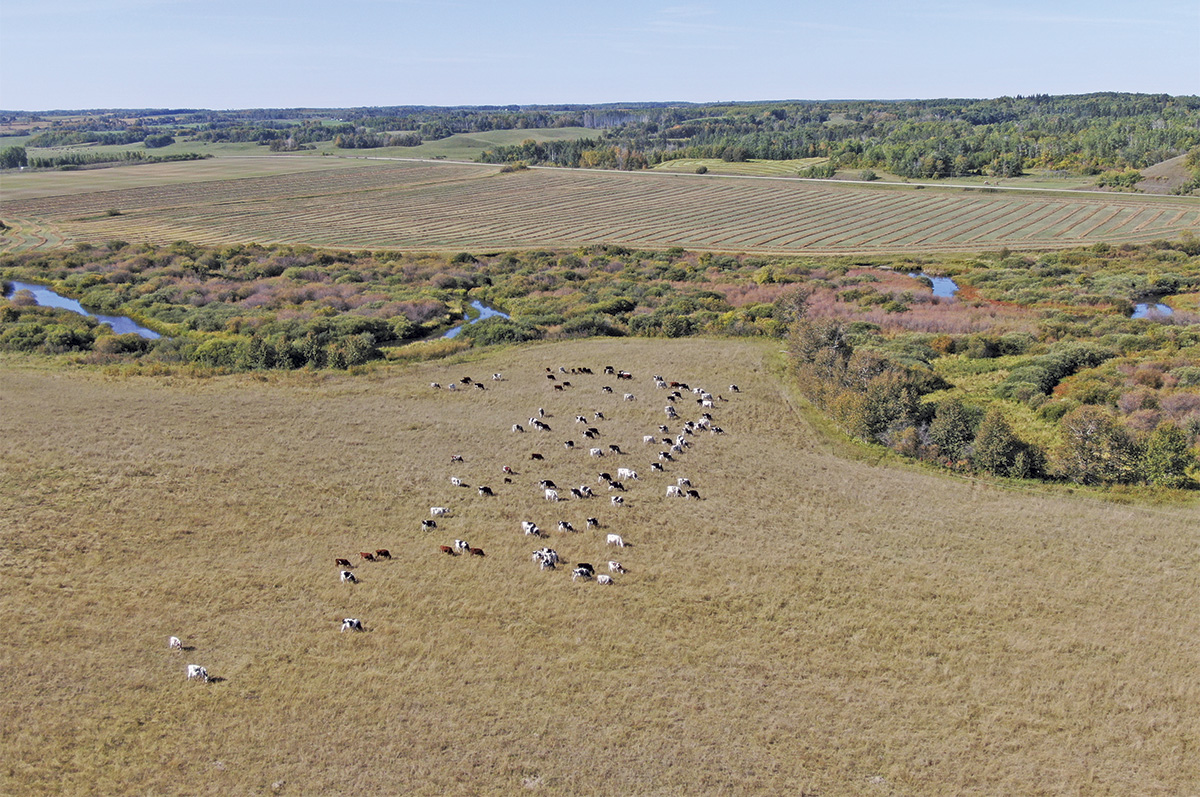
Resources, which are often accompanied by attractive financial incentives, exist to provide dairy farmers with sustainable and cost-effective land management solutions. Photo provided by Connie McLellan.
Wiens says one of the strengths of these initiatives is the ability to customize approaches to biodiversity preservation and land management. Offering a similar message to dairy farmers interested in adopting more biodiversity-conscious practices, he notes, “There is a wide range of best management practices, so what is encouraging for farmers is that you can pick these things off one at a time and choose those things that make sense on your farm and ease into it.”
Amidst the abundance of information available at our fingertips, Gaudet emphasizes the value of experiential knowledge and learning. “There's a lot of good information out there, and there's a lot of bad information out there as well. The best way to weed through that is experience and observations of your own farm,” he asserts.
At its core, the path to regenerative dairy farming begins with a deep connection to the land and a commitment to nurturing its biodiversity, something many Canadian dairies already excel at.
McLellan is optimistic about the progress made through this partnership. She says increased education and knowledge of regenerative farming practices have not only raised awareness of their role in attaining sustainability goals but also improved the productivity of farms across the country. “In Canada, we have a really positive story to tell because we are stewards of the land, and we're the ones responsible for preserving this land for generations to come. I think we're doing a great job of this and really moving in the right direction,” McLellan asserts.
Through the promotion of biodiversity and regenerative farming practices, Canadian dairy farmers are not only safeguarding their farms but also contributing to a more sustainable and prosperous agricultural future.
To learn more about the programs available to farmers through this partnership, contact Connie McLellan.
